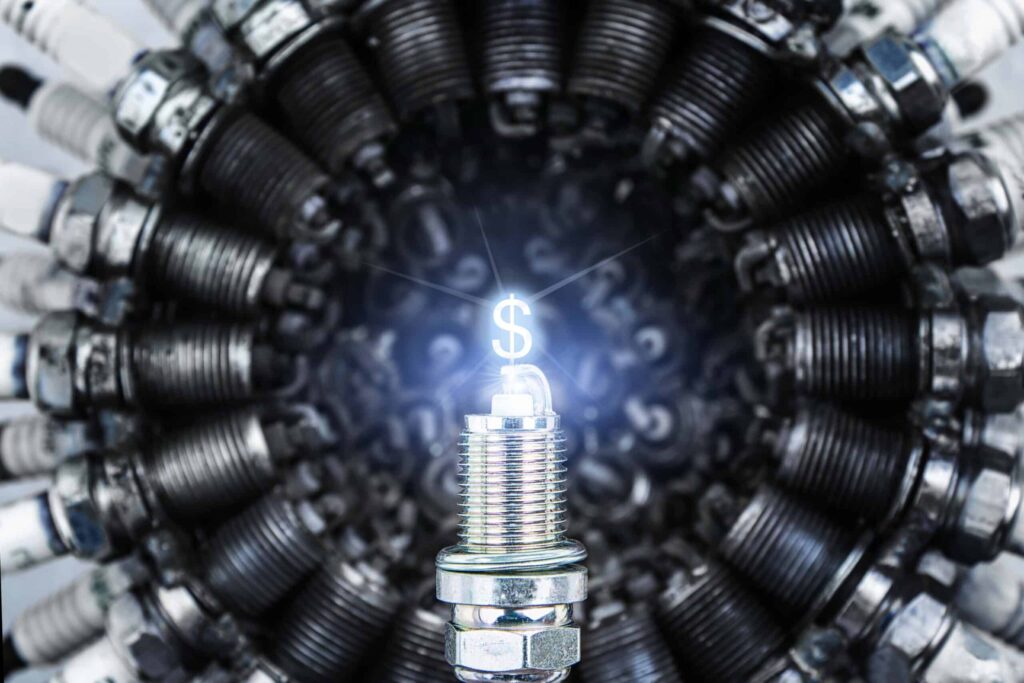These are the most common performance complaints for heavy-duty natural gas vehicles:
- Low power
- Difficulty starting
- Rough idling
- Engine hesitation when accelerating
- Occasional stalling
The most common culprit? Oil contamination in the fuel.
Oil contamination in heavy-duty NGVs can be hard to diagnose and even harder to remedy — especially if the vehicle technician is unfamiliar with compressed natural gas and natural gas engines. If the quantity of oil is significant enough to pass through the coalescing filters on board these vehicles, it can contaminate pressure regulators and engine sensors, clogs filters, cause premature spark plug failures, and even cause pistons or rings to fail…the list goes on.
None of these components are cheap to replace. If the technician doesn’t know what to look for or how to identify that oil is the problem, thousands of dollars will be spent on parts without a resolution. One customer of ours with a small refuse fleet of 11 vehicles ended up purchasing over $42,000 in coils, plugs, and sensors because of this.
So what’s the root cause? At CNG fueling stations, compressors increase the pressure of natural gas to 3,600 psi or higher to allow adequate quantities of natural gas to be stored on vehicles, and they require lubrication to operate properly. These fueling stations are designed with filtration systems to protect against oil that “carries over” from the compressor to the fuel line — but, for a variety of maintenance reasons, many stations don’t entirely avoid this.
When not properly filtered during the compression and dispensing processes, vaporized oil becomes entrained in natural gas in its high-temperature and high-pressure state. When the temperature or pressure is reduced, it drops back out as a liquid. That liquid or aerosol oil then flows into the engine and contaminates every component it comes into contact with.
Once components are contaminated, they cease to function properly. Either the engine’s performance will suffer, or, at worst, the pistons will become damaged and the engine will fail.
So, what’s a heavy-duty fleet to do? Here are a few musts:
- Reduce the amount of oil that’s getting into your vehicles by training your drivers and/or fuelers to detect oil in the fueling nozzle and receptacle. The best prevention is never letting it get there in the first place.
- Train your technicians on the unique components of heavy-duty natural gas fuel systems and engines, how they function, and how to diagnose them. This allows your technicians to distinguish between a fuel problem, a fuel system problem, and an engine problem. Nearly every week, NGVi works with clients who (prior to our training) believed every problem they had experienced was due to their engines, when the reality was often oil contamination.
- Look for excess oil in low-pressure coalescing filters, if these filters are present in your vehicles (some of the more recent Cummins engine models don’t have them). This will be the most significant early indication of oil in the fuel stream. Heavy-duty fleets need to drain these filters as part of their daily pre- and post-trip driver inspections required by the Federal Motor Carrier Vehicle Safety Administration. Drivers should record the amount of liquid from the low-pressure filter on a DVIR daily. If that amount exceeds more than a tablespoon of liquid, report the condition to fleet maintenance and have it checked out. Early detection ensures that the beginning of oil carryover does not totally contaminate sensors and other engine components.
- Implement policies and training for drivers that require them to monitor basic visible fuel system component integrity, especially dust covers on your fuel receptacles. These covers aren’t simply there for aesthetics — they prevent dirt and other debris that collects on these receptacles from being forced into fuel systems during the fueling process.
- If you own and operate the CNG station that fuels your vehicles, make sure maintenance practices are followed precisely. Weekly drainage of coalescing filters and ASME storage vessels at the station is essential, and will alert station maintenance technicians to potential problems. Coalescing filters are designed to remove liquid and aerosolized oil and water from the CNG fuel stream. If you can see that oil has collected in the dispenser filter housings, either there isn’t enough filtration installed at the station, or the filters aren’t being drained frequently enough. A pressure-drop indicator installed across one or more coalescing filters in a series that’s closest to these dispensers is the best way fueling station maintenance technicians can determine when it’s time to change filter elements.
- If your vehicles fuel at public sites, make sure the fuel provider guarantees fuel quality according to a specification that includes maximum water and oil content, among other variables. If the fuel provider can’t or won’t provide that fuel specification, find another fuel provider if possible.
Implementing these simple measures can help heavy-duty fleets save a lot of money and headache. Although they require more effort on the front end, they are surely worth it. Once oil has spread through one of your vehicle engines, it’s extremely difficult (if not impossible) to eliminate, and can cause problems for the remainder of that vehicle’s life.
If you’re experiencing a heavy-duty CNG engine performance problem, or you suspect oil carryover in your fuel and would like technical assistance, contact us at 800-510-6484, or lschwenker@ngvi.com.

